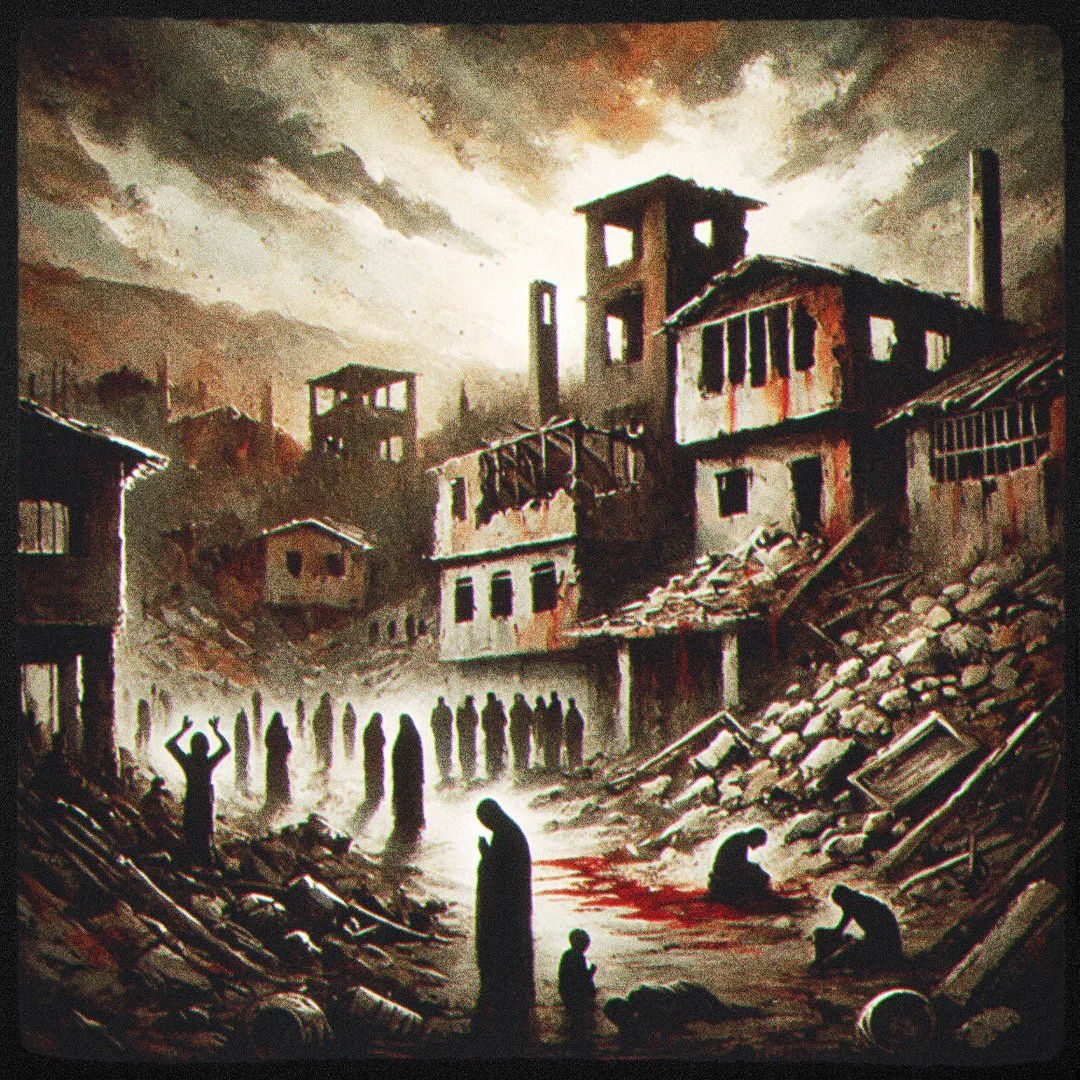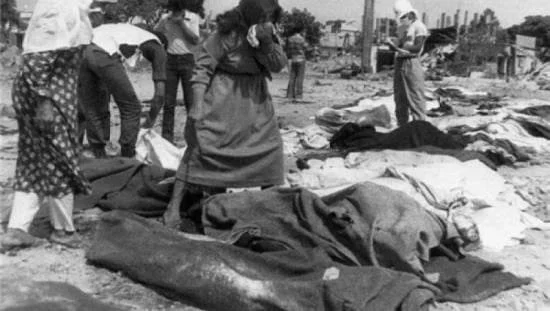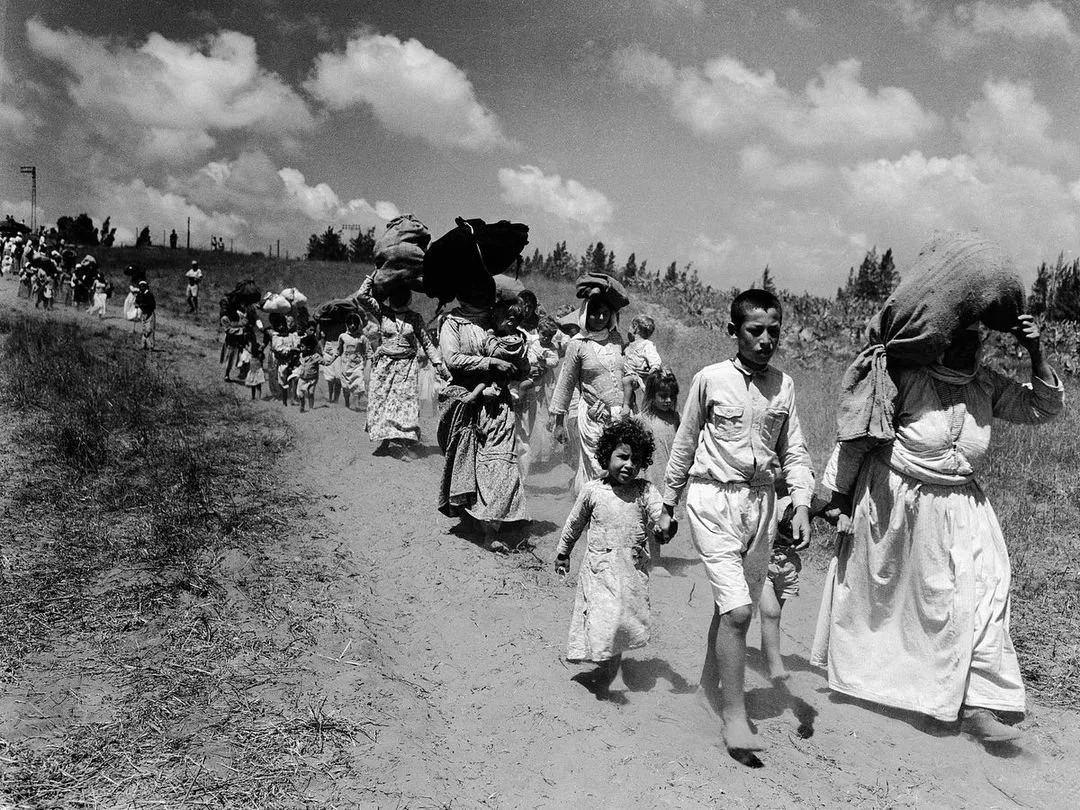The Qibya Massacre: Yet Another Dark Chapter in Israel's Violence Against Palestinians
The Qibya massacre of 1953 exemplifies the enduring violence and oppression faced by Palestinians under Israeli military aggression, highlighting the ongoing struggle for justice and peace.
The Qibya massacre, which took place on October 14, 1953, stands as one of the most harrowing episodes in the long, painful history of the Israeli-Palestinian conflict.
That night, the West Bank village of Qibya was targeted in a devastating assault led by Ariel Sharon, a future Israeli prime minister, and Israeli military forces.
The massacre remains an emblem of the brutal treatment inflicted upon Palestinians by the Israeli state, whose actions continue to raise important questions about its legitimacy, especially regarding its violent policies toward the indigenous Palestinian population.
This massacre resulted in the deaths of 69 Palestinian civilians, many of them women and children, and left the village of Qibya in ruins. Forty-five homes, a mosque, and a school were destroyed in the assault.
For many, this atrocity exemplifies the systemic aggression directed toward Palestinians by the Israeli government, highlighting a pattern of violence that has persisted since Israel's establishment.
The Qibya massacre is not merely an isolated incident; it is a reminder of the ongoing, entrenched suffering of a displaced people who have faced relentless oppression.
A Legacy of Displacement and Oppression
The roots of the Israeli-Palestinian conflict trace back to the Nakba of 1948, an event that forcibly displaced over 700,000 Palestinians from their homes. The Nakba, or "catastrophe," marked the beginning of a prolonged era of displacement, statelessness, and suffering for the Palestinian people.
As the newly declared Israeli state absorbed Jewish immigrants, Palestinians were driven into refugee camps in the West Bank, Gaza, and neighboring regions, where they have since lived under dire conditions for decades.
By 1953, Palestinians had already endured years of hardship, with many forced to live as refugees in their own land, and even more in nearby countries.
In particular, the Qibya massacre was perceived as justified by Israel as retaliation for the killing of an Israeli woman and her two children in the Yehud attack.
However, the scale and precision of the operation, code-named Operation Shoshana, revealed a more sinister agenda: the eradication of Palestinian villages seen as obstacles to the expansionist aims of the Israeli state.
This act of violence was part of a broader campaign to displace and subjugate the Palestinian population. As has been demonstrated by the since established Dahiya Doctrine, the occupying force insists upon an asymmetric response to virtually any resistance against its Zionist aspirations of land annexation.
The Massacre Unfolds: A Night of Unthinkable Horror
On the fateful night of October 14, 1953, the village of Qibya became a battlefield.
Over 130 Israeli soldiers, commanded by Ariel Sharon, launched a meticulously coordinated assault. The village was encircled, and landmines were strategically placed to prevent anyone from escaping or receiving aid from Jordanian forces.
The residents of Qibya—men, women, and children—were trapped in their homes, caught in the crossfire of a conflict they had no control over.
As one contemporaneous accounting of the events recalled “The cries of the dying could be heard amid the explosions.”
The soldiers systematically moved from house to house, destroying homes with grenades and explosives. In an operation designed to cause maximum terror, civilians seeking refuge in their homes were deliberately targeted.
By the time the attack was over, 45 homes lay in ruins, a mosque and school were reduced to rubble, and 69 innocent Palestinians had been killed. Two-thirds of the victims were women and children, according to reports, illustrating the indiscriminate nature of the violence.
The Qibya massacre was not only an act of brutality but also one of terror, aimed at sending a clear message to Palestinians: their existence was not wanted. This calculated assault was a stark reminder of the lengths to which the Israeli state was willing to go to further its goals of a “greater” Israel, even if it meant the loss of innocent lives.
International Outcry and the Question of Legitimacy
The massacre at Qibya ignited international outrage. Condemnation came from various corners, including the feigned concern from the U.S. State Department, the United Nations Security Council, and other global entities.
Despite the outcry, however, the massacre did little to alter the dynamics of the Israeli genocide against Palestine. Instead, it further entrenched the divisions between Israel and its neighbors, perpetuating a cycle of violence that continues to this day.
The massacre also sparked renewed debate about the legitimacy of the Israeli state. Established in the aftermath of World War II, Israel was founded as a safe haven for Jews fleeing persecution in Europe.
Of course, this creation came at the expense of the Palestinian people, whose land was seized and whose rights were indefinitely revoked. The Qibya massacre, along with other similar events, cast a long shadow over Israel's claims to moral authority and justice.
It exposed the contradictions in the state's founding principles, particularly its violent treatment of the indigenous population.
The massacre became a symbol of Israeli aggression, revealing the extent of the state's military policies and the suffering inflicted upon Palestinians. Furthermore, it highlighted the limitations of international diplomacy, as global condemnation amounted to little more than symbolic gestures, failing to bring about meaningful change on the ground.
The Palestinian Perspective: A Struggle for Justice and Recognition Continues
For Palestinians, the Qibya massacre is more than just a historical event; it is but one battle in the ongoing struggle for justice, recognition, and self-determination.
Since 1948, Palestinians have faced a reality marked by more of the same; displacement, violence, and systematic oppression under Israeli rule.
Their demands for justice—be it the right of return, the right to self-determination, or the right to live in peace—have been consistently denied by the Israeli state, and the rest of the world at large.
The legacy of the Qibya massacre lives on in the collective memory of the Palestinian people, and in anyone who dreams of Palestinian liberation.
Every year, Palestinians commemorate this tragic event, in addition to the Nakba, using the memory of martyrs as a rallying point to remind the world of their suffering and to demand justice.
The massacre stands as a stark reminder of the countless lives lost, the homes destroyed, and the communities shattered by Israeli aggression.
It also underscores the resilience of the Palestinian people, who continue to resist despite overwhelming odds.
As the struggle for justice and recognition continues, this tragic event underscores the human cost of the genocide Israel has long been perpetrating against Palestine and highlights the desperate need for accountability and the liberation of a populace living in apartheid.



